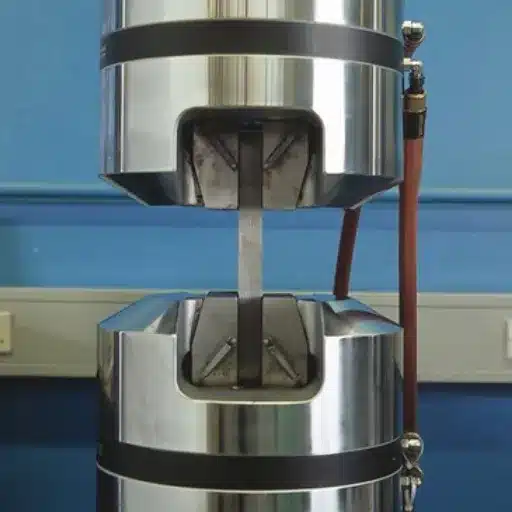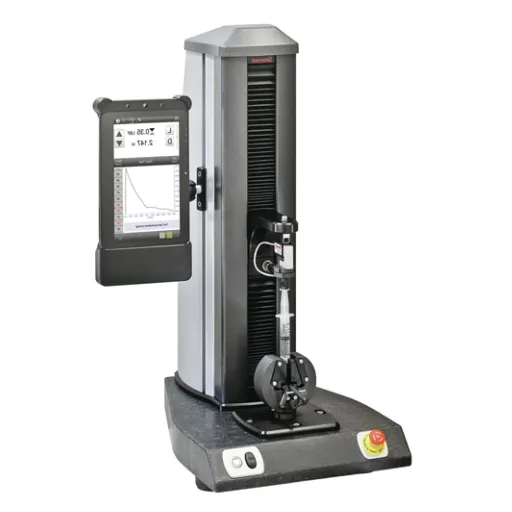Compression springs are important in a number of manufacturing sectors: automobile, aeronautics, etc., where accurately function and endurance cannot be omitted. It, however, calls for appropriate equipment and serious quality control testing mechanisms for placing compression springs in use. This blog provides an overview of a compression spring testing machine, its principles, significance, and considerations in selection of an appropriate unit. Whether you are a veteran or a novice in the world of springs, this paper will equip you with the requisite understanding to confidently manage any challenge relating to spring testing and its application.
What is a Spring Tester and How Does it Work?
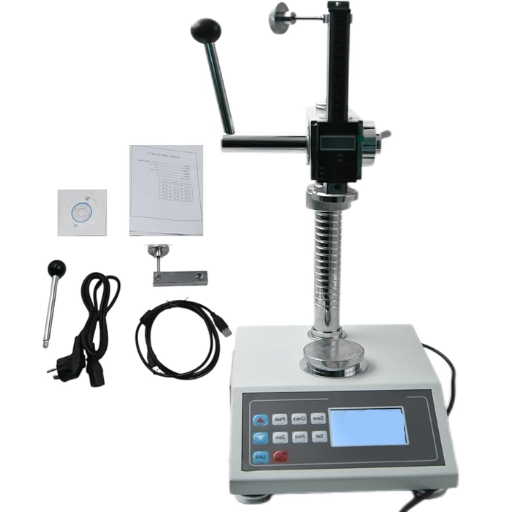
A spring tester is fundamentally a component that serves the purpose of measuring various characteristics exhibited by springs such as force, tension, displacement, etc. with great precision. The machine works by loading or displacing the spring in a controlled manner and measuring its deformation. The structure of the apparatus involves loading device, high positional sensors, and display or software interface for the results. These instruments are utilized in order to provide assurance that the spring parts are applied within the safety and performance limits of such components, which explains their widespread use in production, quality assurance and engineering tasks.
Understanding Spring Tester Machines
Spring tester machines are known for optimized determination, on various mechanical spring parameters including, the holding capacity, deflection per unit load, elasticity and rigidity. Spring tester machines affect springs in a controlled manner so that the latter’s caving stress corroborates the standards prescribed in that line of business. Most spring testers that one may come across today will incorporate modernized software methods with data concepts in them, and are used separately in product innovations, automotive industries and ruler industrial practices. Such equipment is subjected for maintaining the quality control and standardization in the manufacturing.
Components of a Compression Spring Tester
A compression spring testing machine is an assembly of several parts which assure the precision and efficiency of the machine during testing. Such parts adequately include the following:
1.Load Cell or Force Gauge
A load cell or a force gauge is an operational sensor that evaluates the amount of load that is applied over the spring. This device enables accuracy in load measurement, thus it helps in the critical evaluation of the spring’s properties and capacity while under compression.
2.Travel Transducer
This device senses and measures the amount of travel that the spring has traveled as it is being compressed. The travel data is important as it will show the degree of deformation the spring underwent when load was applied on it for purposes of determining whether the spring meets design criteria or not.
3.Controlling System
The controlling system becomes the hub of the entire assembly, metering the entire action, and processing information. The latest models allow this system to include IoT and AI for high-tech surveillance and breakdown predictions.
4.Holding System
The apparatus holds the spring’s full capacity during the assessment session from one end to provide proper tension and coherence in the measurements obtained. It has been designed in agitation towards different sizes and forms of the springs to be held during testing.
5.Panel And Control Centre
The latest testers combine digital indicator or universal interface which allows operators to check and adjust the parameters like load, travel, dormitancy, etc. easily.
6.Compression Drive
Such a drive is intended for the compression process that is powered mostly through the use of high precision electrical, hydraulic, or pneumatic drives depending on the model.
All components are important in making the compression spring testing machine run accurately and responsibly providing the necessary system information to engineers to ensure that spring performance conforms to production and safety requirements.
How Testing Machines Measure Spring Rate
There are types of equipment that test the spring rate of a given spring by applying a given force over the spring in stages and measuring the resulting displacement. Such an equipment upon the use of precise load cells and displacement devices is able to determine the spring rate by measuring the force applied over a distance and dividing it accordingly with this distance span (k = F/Δx). Pneumatic or hydraulic systems, which are incorporated into sophisticated models to supplement the control of force sap, ensure such measurement remains stable, while computer-aided measurement allows data processing and the creation of graphs in real mode. By means of this, the process allows the users to achieve the expected outcome and meet the requirements of spring characteristics.
How to Choose the Right Compression Tester for Your Needs?
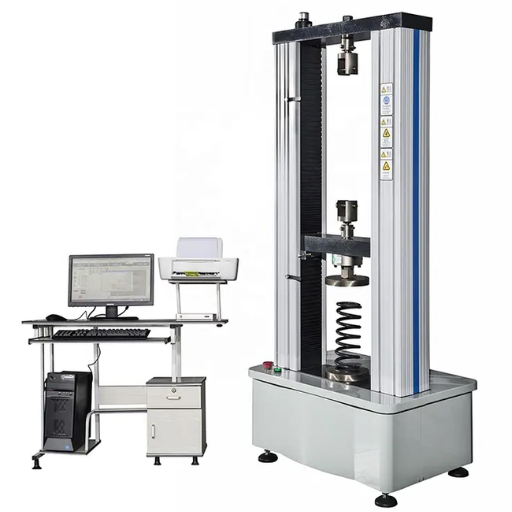
While making a decision to buy a compression spring testing machine it is important to take into consideration the working conditions available to the user. Take note of the maximum force it can withstand to be sure it suits the proposed test range. Accuracy is paramount; make sure you have models with good readability- high precision and that meet the required standards. Check how easy it is to record and analyze collected data and the efficiency and convenience of integrating such machines in the workflow. Also, remember the force application (whether manual hydraulic or pneumatic) that will be used depending on how often you will conduct the tests and how such operations should be done. Hardness, practicality, and especially manufacturers aftersales help are significant issues in the selection process.
Key Specifications to Look For in a Compression Spring Tester
When deciding upon a compression spring testing machine, enough load capacity is the key factor. Next, when selecting a load cell for testing, go for the ones that have the highest accuracy (misreading) that is no more than ±0.5% (higher the loading accuracy the better). The range of testing speed is an important parameter too, since different speeds ensure stretching of springs of specific rigidity. There is, besides, a need to focus on the accuracy of the measurement of displacement which has a great bearing on the accuracy of the calculation of compression as well as load deflection take‐off characterestic. The tester should come with a sophisticated yet easy-to-use software that also offers visualisation of every test run, or its parts in printable graphs. Lastly, assess the materials from which the tester is constructed for appropriate functional use and adherence to the respective ISO or ASTM compliance standards.
Comparing Testing Systems: Analog vs Digital
Analog and digital testing systems differ in precision, usability, data handling, cost, and maintenance.
|
Key Point |
Analog |
Digital |
|---|---|---|
|
Precision |
Moderate |
High |
|
Usability |
Manual |
Automated |
|
Data Handling |
Limited |
Extensive |
|
Cost |
Lower |
Higher |
|
Maintenance |
Manual |
Software-based |
Evaluating Compatibility with Different Spring Types
The primary spring types to consider are compression, extension, torsion, and constant force springs.
|
Key Point |
Compression |
Extension |
Torsion |
Constant Force |
|---|---|---|---|---|
|
Load Type |
Axial compression |
Axial pull |
Rotational |
Constant force |
|
Application |
Shock absorption |
Tension |
Torque |
Retraction |
|
Material |
Steel, Alloy |
Steel |
Steel |
Steel, Alloy |
|
Durability |
High |
Medium |
High |
Medium |
|
Cost |
Moderate |
Moderate |
High |
High |
What are the Essential Accessories for a Spring Testing System?
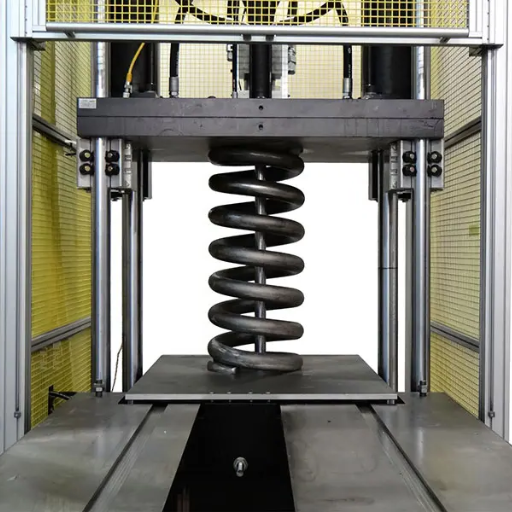
For an advanced spring testing device to work efficiently, there are some basic accessories that should be included in the system. This includes the following common items:
1.Load Cells
Force transducers allow measurement of forces generated in compression, tension or torsion during testing. High-quality load cells are very important when it comes to accuracy as they these force readings all the time.
2.Fixture Attachments
Various interchangeable adapters including compression plates, tension hooks and torsion arms shall be required to position the springs of different types and sizes for testing purposes.
3.Displacement Sensors
This is where displacement or deflection of the spring when under load is measured by the sensors and related data on the stiffness and elastic properties are collected.
4.Spring Testing Software
Advanced software that performs data acquisition analysis and data display provides a convenient way of enhancing the testing operation.
5.Environmental Chambers
For some villas, since the testing is done under set sites and that durability is analyzed with performance, there are temperature and humidity chambers.
6.Calibration Tools
Examination with standard weights and equipment every few days is necessary to confirm that the system is functional and produces accurate information.
With all the above mentioned accessories a spring tester can easily assess even the most complex cases found in industries and research.
The Role of Load Cells in Spring Tests
Load cells are indispensable tools used for spring tests. The load cells are very precise and give measurements of force making the entire testing mechanically characteristic of the springs. This tool turns the exerted force into a usable quantity in the form of electrical signals. The system can measure the spring’s stiffness or rate, how much force it can hold, and its displacement. The application of high end load cells, which are calibrated as per the standards of the industry, makes it possible for me to collect data consistently which is very important to ensure that the process of spring testing is repeated and valid for different scenarios.
Using Force Gauges for Accurate Measurement
The force gauges are imperative when it comes to the calibrated measurement of forces normally application to the springs, in order to ascertain that they remain useful and reliable. In my work, I use both digital and mechanical form of force gauges to measure essential aspects such as tension, compression and peak force accurately. This involves careful calibration of the equipment within the industry standard to achieve consistent and reproducible findings. I also make sure that every single recording is made and filled up in accordance with the required procedure to facilitate working practices and design within quality control of spring testing.
Exploring Grips and Their Impact on Testing Applications
When it comes to testing applications, grip selection plays an important role in the type of results obtained from different experiments, be it accuracy or precision. Most grips help in holding the test sample on position in such a way that it will not slip when the test is being performed, which is necessary while testing material deformation due to different loads. For this reason, grip parameters such as size, type, mechanism, surface of the grip should correspond with those of the specimen dimension, shape and material in order to eliminate errors and complications. Designs of grips such as simple wedge grips for tensile load, vacuum assisted grips for soft surfaces, or special grips designed for fragile delicate targets are the most commonly used grips. An appropriate grip choice helps increase productivity derivation and helps enhances the accuracy of test results across various industries including automobile, aerospace and others.
How to Conduct Precise Compression Tests with a Force Tester?
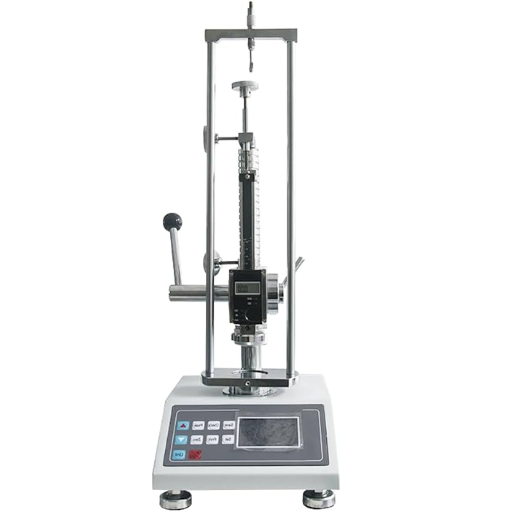
Let the following procedure for measuring compressive forces using material testing machines be performed. First of all, the material testing machine should be verified and adjusted if needed to ensure correctness of forces determination. Then, an appropriate compression platen, or otherwise, fixture has to be used, which in this case is well adapted to the dimensions and to the material of the element, in order not to create stress focusing zones or an uneven pressing. The specimen is properly secured in order to avoid horizontal displacement. The testing conditions, such as the rate of loading and the allowed load, shall be set based on the material or a specific industry particularities. The details of the test should include loading in a gradual and even manner, taking all measurements with onboard sensors for accurate results. The findings following the evaluation should be explained, especially if there are any outliers, looking at the consistency of patterns and behavior with past material characteristics.
Setting Up the Spring Testing Machine
To ensure correct installation of the compression spring testing machine, first read the manufacturer’s instructions in order to determine the equipment specifications and its operations limits. Position the machine on an even plane to avoid excessive vibrations and improper alignment during use. Thereafter, following the manufacturer’s instructions, calibration of load cell and displacement sensors when required, must be performed to ensure accurate data is obtained. Between the testing grips, the spring must be located and tightly restrained so as to avoid lateral shifts and provide uniform load.
Specify operational parameters for the machine such as loading limits, number of cycles, and the amount of deformation. These operational guidelines should take into consideration the provided material characteristic of the spring and any relevant international standards such as ASTM or ISO. During the experiment, it is important to pay keen attention to the process using the supplied software that monitors the tensile, compressive and cyclic loads. Upon completion of testing, scrutinize the data extremely carefully, ensuring there are no deviations or errors and this being compared to the set limits of production demonstrating the spring’s capability of meeting design criteria, if indeed it exists. It is a good practice to service and recalibrate the machines regularly to maintain its precision and efficiency.
Calibrating Your Compression Tester for Accurate Results
Before testing the compression spring testing machine, I ensure that the calibration is aligned to the requirements of the manufacturer and its respective documentation. Initially, I inspect the tester to make sure it is not littered and is clear. Thereafter, I utilize optimum standard weights or measurement tools compatible with the load cell to make sure the readings of the system are like the aforementioned values relative to allowed tolerance limits. If differences observed in reading are beyond acceptable limits I utilize the control software to change testers’ settings or even reconstruct the system. In this scope of calibration, I test for aspect of excessive mechanical degradation in parts or incidence of sensors being frailed which could affect accuracy. I even undertake such routine and record trne results to ensure that degrees of accuracy and performance of the tester for measurement purposes are always maintained.
Interpreting Spring Test Results: What to Look For
While carrying out spring tests, I pay most attention to critical features such as the spring’s rate, the length without load, and the maximum load it can withstand. I check to make sure that these figures fit into the allowable range and the purpose for which the spring is intended. Any anomalies such as a decreased spring rate or high plastic strain may be a symptom of the material wearing out or poor design of the product. I also take into account the stability of the load versus deflection curve such that it is within the expected linear or non linear region depending on the type of spring being used. Maintaining records and analyzing changes from the past is useful in revealing patterns or deviations which ensures that the spring remains functional and achieves its purpose.
What are the Benefits of Using a Motorized Spring Tester?
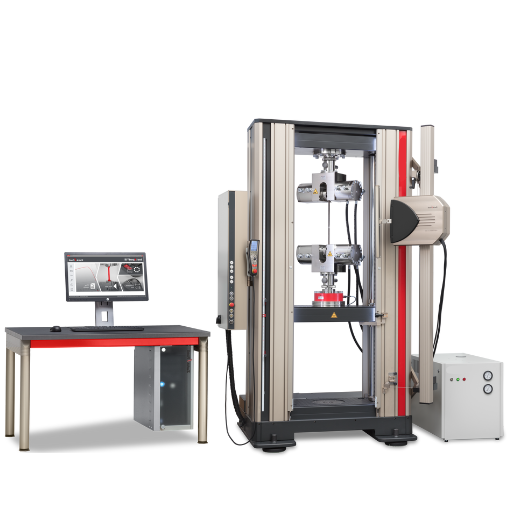
A compression spring testing machine is utilized to test springs with accuracy and efficiency in a repeatable manner. It has a provision of accurate determination of both load and displacement with little scope of creeping errors, ensuring reproducible results in a number of attempts. This process eliminates tedious time spent in manual operation and improves throughput in continuous mass production processes. Furthermore, in most cases, automated testers come with additional capabilities that may include digital readouts, data collection, and programming for controlling the device for enhanced evaluation and subsequent extrapolation of results. As a result, such testers are critical for use in quality assurance and research as springs can be designed without compromising on their functionality or safety.
Enhancing Precision with Motorized Testing Machines
Motorized testing machines are purposely designed to vastly improve the precision in assessing any mechanical properties like forces, displacements, and strength. They are designed to improve precision and remove any errors by making the analysis automated. This is because there is significant variation when manual testing is conducted and thus the elimination of such source of errors enhances the accuracy of the repeated testing. Furthermore, they are particularly very beneficial in compression spring testing machine where tensile load is applied and also in compression tests on springs at specified strain speeds.
Most developed motorized testing machines are equipped with load cells for force measurements, radio devices for yep controlled test actions e.g. 20 or less movements performed, as well as smart software systems designed for paperless collection and processing of experiments in real time. They make it easy as well to meet the industrial regulations e.g ASTM or/and ISO which are essential in the production and service provision. Moreover, most of them have provisions for capturing large amounts of data as well as storage in order to make it easier particularly in the preparation of performance records for easy reference in case there is need for justification of a comprehensive explanation.
When the testing process comes into the scope of the latest technologies then these motorized testing machines become very effective in saving time and resources, maintaining the high quality of products, minimization of the critical defects and ease of usage is very high. Therefore, they are very crucial in the field of study as well as in the industry.
Automating the Testing of Springs for Consistency
The prospects of automating spring testing include elimination of manual variations in precision, improvement in accuracy of load and compression measurements and also testing in consistent and same conditions across many samples. There are sophisticated spring testing machines which have inbuilt sensors and software and can measure parameters such as spring rate displacement and the fatigue of the spring accurately. The usage of automation does not only help in recording data and producing reports, it also helps manufacturers keep up with the required quality levels at reduced downtime, inspection and less intervention of humans. By providing real time monitoring and programmable protocols for testing, constituents of automated compression spring testing machine provide an adequate performance verification mechanism that is mostly applicable in an industrial setting.
Understanding Spring Travel and Deflection Measurements
The parameters which are spring travel and deflection are used in evaluating the performance of the spring under a given load. Spring travel which I understand is the distance a spring moves when there is an applied load. On the other hand, deflection occurs when the spring is elongated or pant compressed, in which case the free height is minimized. There are important aspects to consider when taking accurate measurements, such as the spring load limit, the possibility of deformation of material and the particular design of the spring. These measurements show whether the spring operates well within the desired application, or if its performance will be compromised under certain normal conditions.
Reference Sources
-
ZwickRoell – Spring Testing & Spring Testing Machines: Offers insights into multi-channel spring testing machines and their applications.
-
Ametek Test – Spring Testing Machine and Equipment: Provides details on various types of spring testers, including manual, motorized, and digital options.
-
Instron – Spring Testing 101: A guide focusing on helical compression springs and their testing processes.
-
Presto Group – ASTM A125 Standard Test Method For Steel Springs: Discusses the ASTM A125 standard for testing steel springs.
-
KB Delta – The Fundamentals of Compression Spring Testing: Explains the importance of compression spring testing across various industries.
Frequently Asked Questions (FAQs)
Q: What is the purpose of using a compression spring testing machine?
A: A compression spring testing machine is used to evaluate the performance of springs by measuring their compression force, spring deflection, and spring constant. This helps ensure that the springs meet the required specifications for their intended applications.
Q: How does a kn universal testing machine differ from other testing devices?
A: A kn universal testing machine is capable of testing both tension and compression forces, making it versatile for assessing different spring systems. It provides high precision measurements up to 100 kn, suitable for high force applications.
Q: What are the types of springs that can be tested with a compression spring testing machine?
A: Every machine these days is manufactured to test many different springs, tension springs, torsion springs, compression springs and this is all possible thanks to the fairness and objectivity of the designers.
Q: What is the significance of measuring the outer diameter of a spring?
A: It is essential to measure the outer diameter of a spring so that it is easily installed in its final application. This is useful in ensuring that the spring in question will be effective in the mechanical system intended for its use.
Q: Can these machines excel in testing high precision springs?
A: Yes, these machines are equipped with advanced testing technology and digital force gauges that allow them to excel in testing high precision springs, ensuring reliable spring performance.
Q: What role does spring deflection play in testing?
A: Spring deflection is a key parameter in testing as it indicates how much a spring compresses or extends under a load. It is crucial for determining the spring constant and the overall performance of springs in real-world applications.
Q: How to Check Springs in These Machines?
A: A mixture of traditional test procedures and more sophisticated testing apparatus are applied in some machines so as to check the stiffness of the structure of springs, their capacity to be compressed among other factors that enable the work of springs.
Q: Why would it be necessary to incorporate digital force gauge in the spring tests?
A: Since digital force gauge has the ability to produce very accurate force measurements and also the measurements are very easy to read, it becomes one of the way to determine how well springs are working and whether they conform to particular plans and regulations.
Q: Is it possible to test both tension and compression springs with these machines?
A: Yes, these machines are designed to test both tension and compression springs, allowing for comprehensive evaluation of different spring characteristics in one device.
Q: How does testing technology contribute to the assessment of different spring systems?
A: Advanced testing technology allows for detailed analysis and precise measurements, facilitating the assessment of different spring systems and ensuring that they perform as intended in their respective applications.





